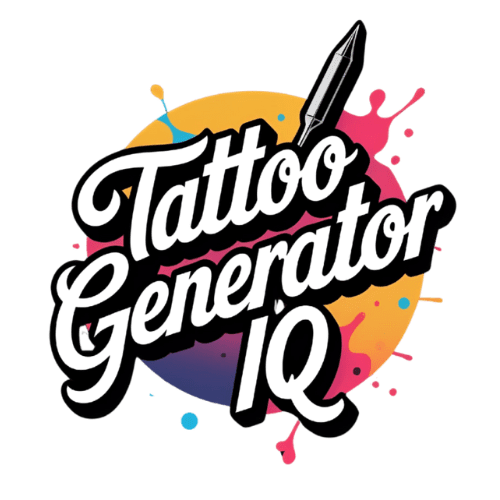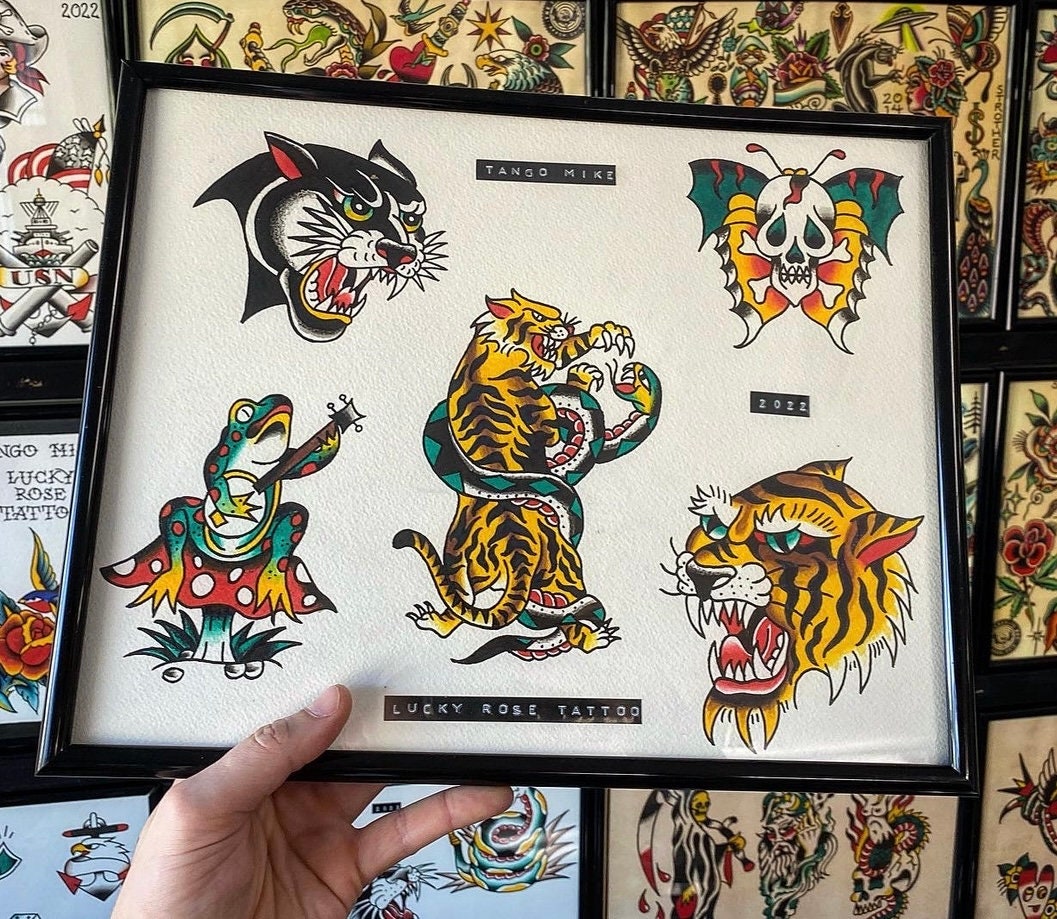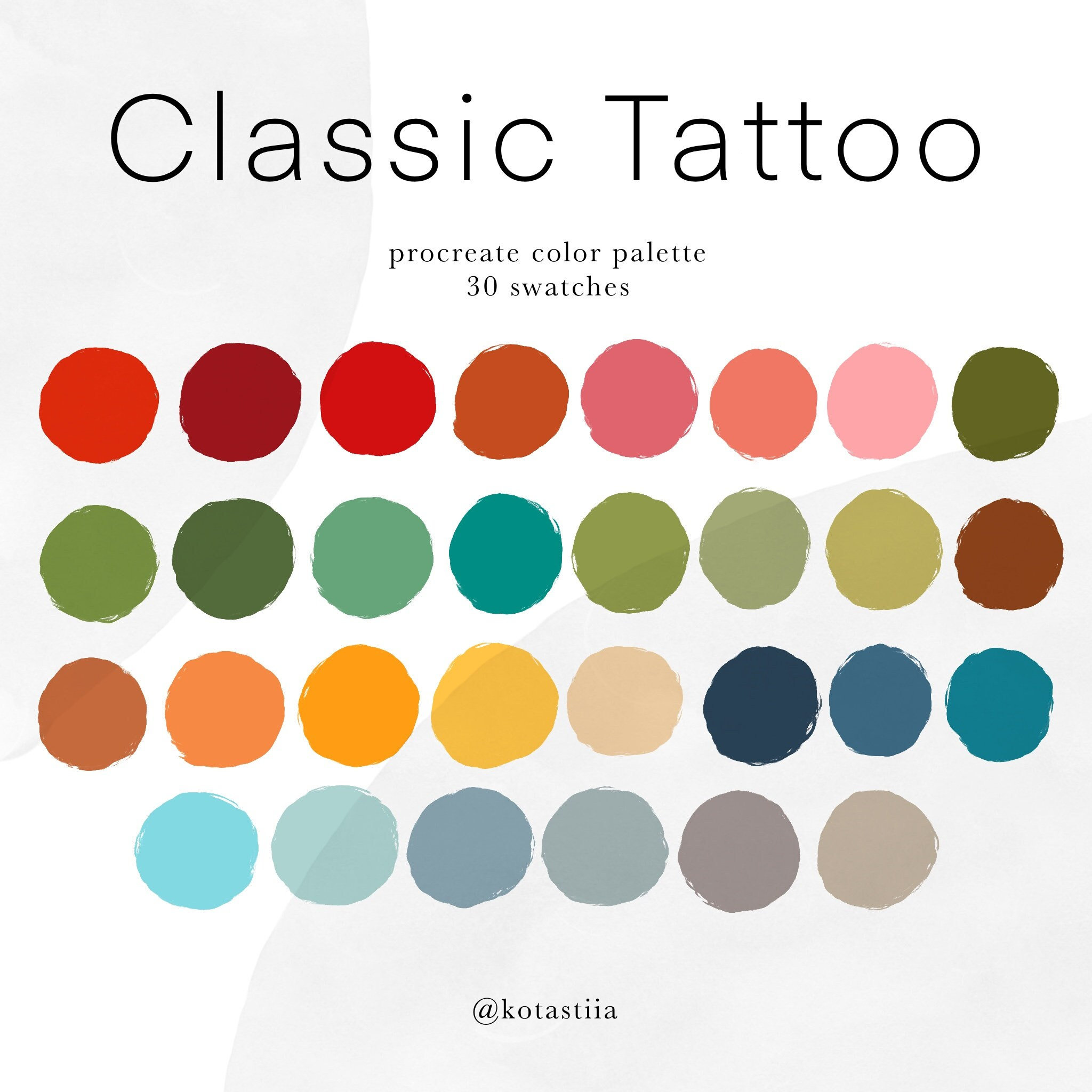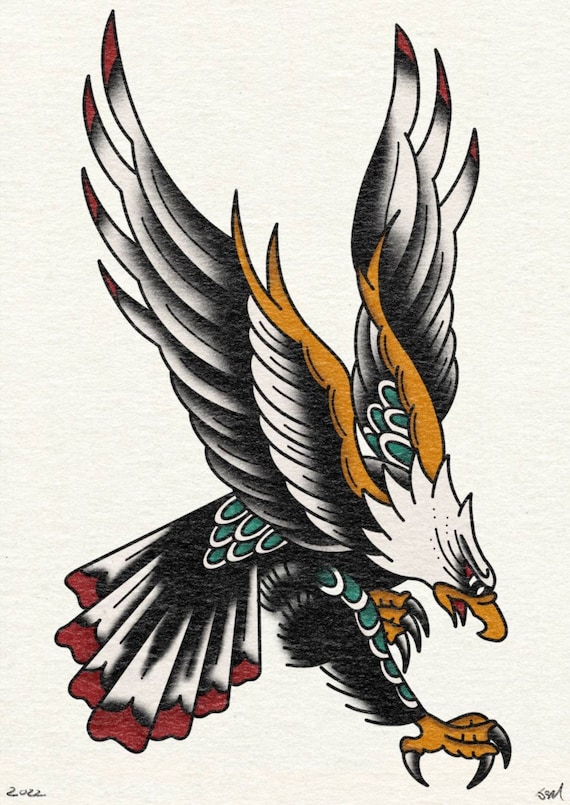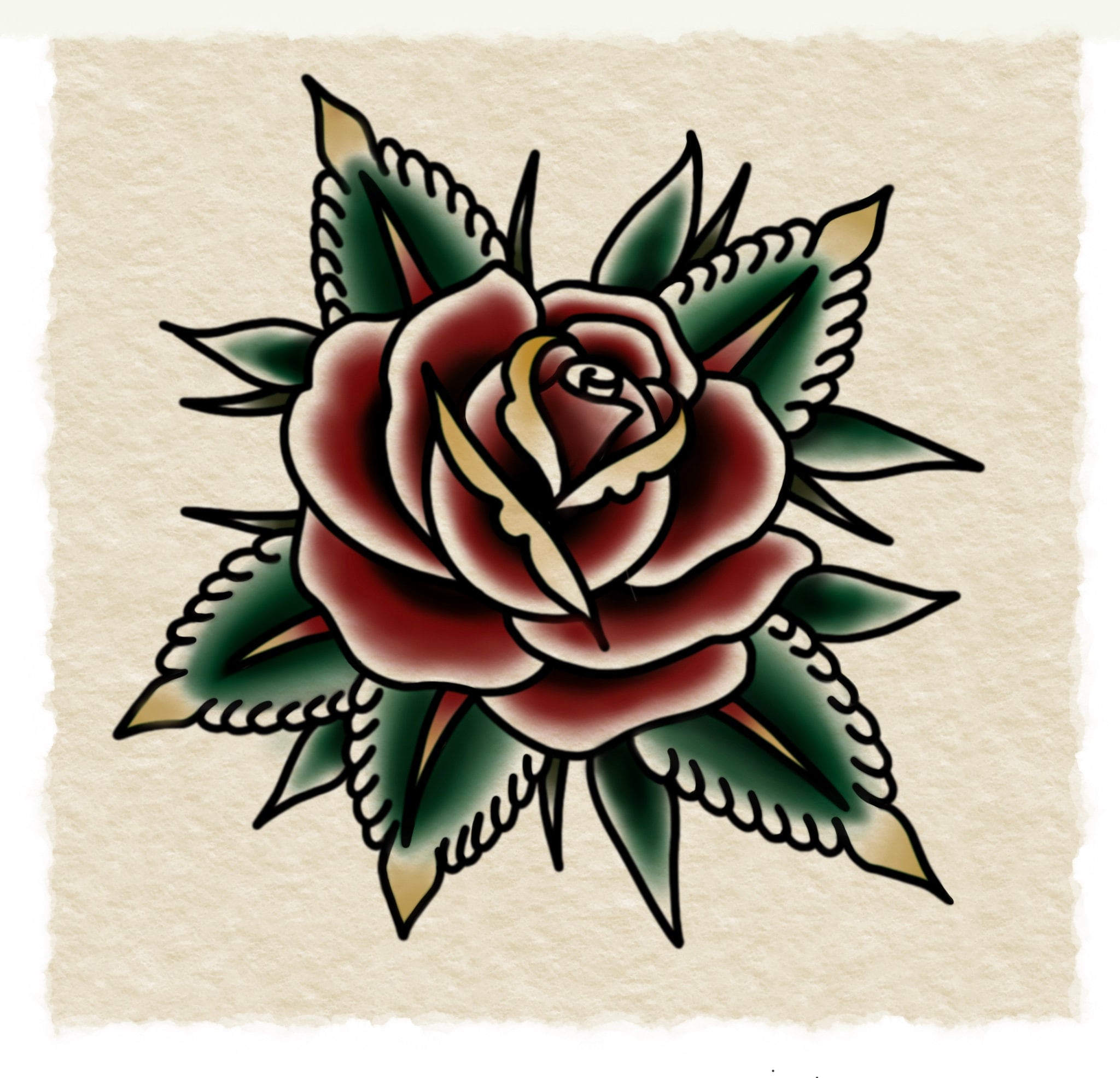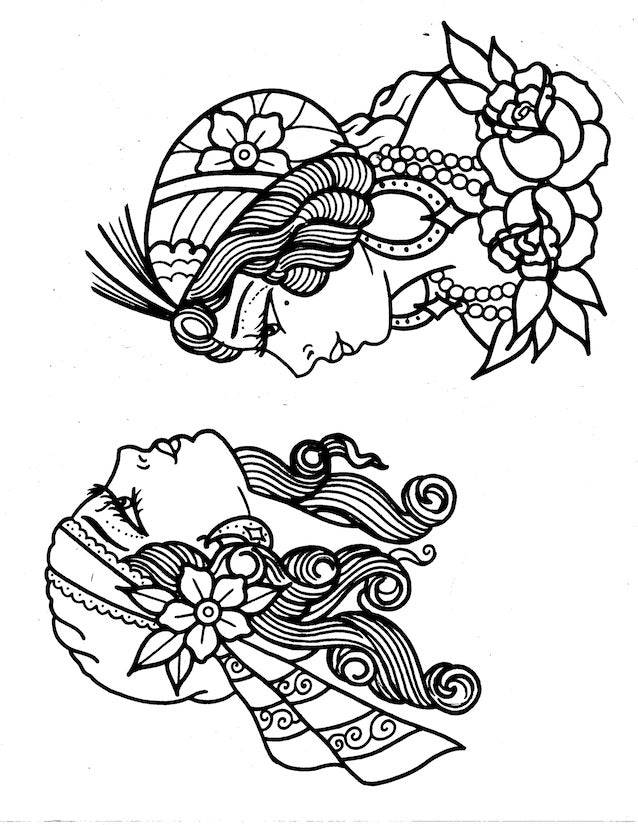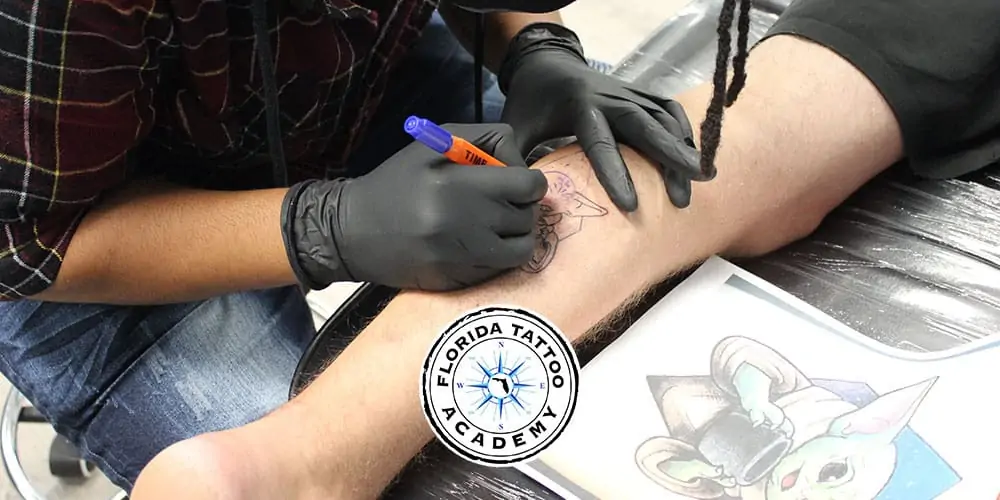The Ultimate Guide to 25 American Traditional Tattoo Flash Designs That Never Go Out of Style
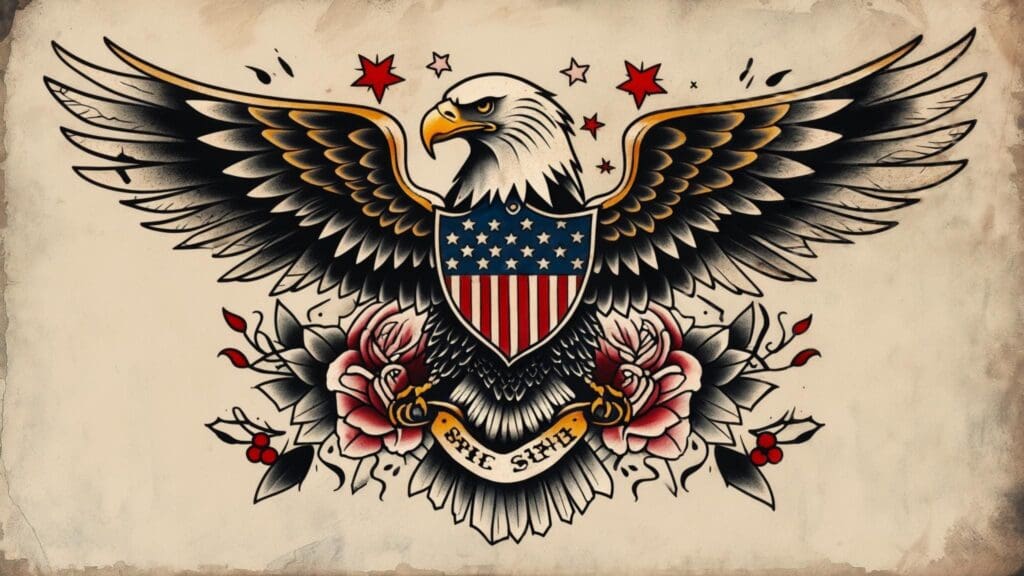
American traditional tattoos represent the most enduring style in tattoo history, with origins tracing back to sailors crossing the seas and gaining popularity during World War I and II when American sailors got tattooed at posts throughout the world. I remember walking into my first tattoo shop at 18, completely overwhelmed by the flash sheets covering every wall. The bold anchors, fierce eagles, and vibrant roses immediately caught my attention – there was something timeless about these designs that spoke to me before I even understood their rich history.
Whether you’re considering your first tattoo or adding to an existing collection, understanding american traditional flash will help you make informed decisions about designs that’ll look incredible for decades to come. For those new to the tattoo world, our comprehensive guide on first tattoo ideas provides essential insights into choosing your initial ink, which pairs perfectly with understanding traditional flash fundamentals.
Table of Contents
- What You Need to Consider When Choosing American Traditional Tattoo Flash
- Top 25 American Traditional Tattoo Flash Designs
- Classic Nautical & Maritime Designs
- Patriotic & Military Designs
- Nature & Animals Designs
- Skulls & Gothic Designs
- Miscellaneous Traditional Designs
- Detailed Design Analysis and Examples
- Complete Quality Evaluation for Each Design
- Modern Technology Meets Traditional Flash
- Final Thoughts
TL;DR
- American traditional tattoo flash features bold lines (3-7mm), limited color palette (black, red, yellow, green, blue), and iconic imagery rooted in maritime and military history
- The 25 top designs span five categories: nautical/maritime (8 designs), patriotic/military (5 designs), nature/animals (6 designs), skulls/gothic (3 designs), and miscellaneous traditional (3 designs)
- Quality flash prioritizes aging potential through thick lines and solid color fills rather than fine details that blur over time
- Each design carries specific cultural significance – anchors represent stability, swallows symbolize safe return, eagles embody freedom, and roses signify love and beauty
- Technical execution requirements vary from beginner-friendly (anchors, roses) to advanced skill level (pin-ups, complex eagles)
- Modern AI platforms combine traditional authenticity with contemporary design flexibility
The traditional tattoo flash style has survived decades because it addresses fundamental challenges that every tattoo faces over time. These designs work because they’re built to last, using techniques that actually improve with age rather than deteriorate.
What You Need to Consider When Choosing American Traditional Tattoo Flash
Before selecting any american traditional design, you need to evaluate six critical factors that separate exceptional flash from mediocre options. These considerations include design quality with proper line work, authentic color palette usage, symbolic meaning and cultural significance, technical execution requirements, artistic authenticity, and long-term aging potential. Understanding these criteria helps you choose designs that’ll remain beautiful and meaningful for decades.
Design quality centers on bold, clean lines ranging 3-7mm in width with consistent line weights, smooth curves, and deliberate execution that avoids thin details destined to blur with age. I’ve seen too many people choose delicate traditional tattoos that lose their impact within five years because the artist didn’t understand proper line weight requirements.
Authentic traditional color schemes rely exclusively on black, red, yellow, green, blue, and occasionally purple or brown in their pure, saturated forms without pastels or gradients. When you see a traditional tattoos with washed-out colors or gradient effects, you’re looking at work that doesn’t understand the style’s technical foundations. The restricted palette exists for practical reasons – these colors age predictably and maintain their vibrancy over decades when applied correctly.
Source: etsy.com
| Quality Factor | Beginner-Friendly | Intermediate | Advanced |
|---|---|---|---|
| Line Weight | 5-7mm consistent | 3-5mm varied | 3-7mm complex |
| Color Palette | 2-3 colors max | 3-4 colors | Full traditional palette |
| Design Complexity | Simple shapes | Moderate detail | Complex compositions |
| Symbolic Meaning | Universal symbols | Cultural specific | Deep historical context |
| Aging Potential | Excellent | Good | Varies by execution |
| Technical Skill | Basic outline work | Solid fills + shading | Advanced anatomy |
Understanding Line Work and Design Quality Standards
American traditional tattoos depend on bold, confident line work that maintains integrity over time. Quality flash features consistent line weights between 3-7mm, smooth curves where appropriate, and sharp angles that create the distinctive traditional aesthetic. The line work must be deliberate and avoid thin details that will blur as tattoos age naturally.
Line consistency requires understanding how different line weights interact within a single design, with thicker outlines (5-7mm) for main elements and slightly thinner lines (3-4mm) for internal details. This hierarchy creates visual depth while ensuring every element remains readable decades later.
Proper curve execution demands smooth, flowing lines that follow natural forms while maintaining the bold aesthetic that defines traditional work. You can spot amateur traditional tattoo flash immediately – the curves look shaky, the line weights vary randomly, and fine details dominate the composition.
Understanding Technical Execution Requirements
Technical execution varies dramatically across traditional designs, from beginner-friendly pieces that forgive minor variations to advanced compositions demanding expert-level skills. Simple designs offer accessible entry points, while complex eagles, pin-ups, and detailed ships require years of tattooing experience and deep understanding of traditional techniques.
Beginner-appropriate designs feature forgiving elements with thick outlines, simple shapes, and solid color fills that mask minor technical imperfections while maintaining visual impact. These pieces work because they’re built around the fundamental strengths of traditional tattooing rather than pushing technical boundaries.
Expert-level pieces demand precise anatomical knowledge, complex shading techniques, and sophisticated color relationships that only experienced artists can execute successfully. Understanding the financial investment is crucial when choosing complex designs, as detailed work often requires multiple sessions and higher costs – our detailed breakdown of tattoo pricing helps you budget appropriately for traditional flash work.
Color Palette Authenticity and Application
Traditional flash uses a restricted but powerful color palette consisting of black, red, yellow, green, blue, and occasionally purple or brown. These colors appear in their pure, saturated forms rather than mixed tones or gradients. Quality application means solid, opaque color fills designed to maintain vibrancy through decades of natural fading.
Color saturation in traditional work requires understanding how pure pigments age differently, with reds and blacks maintaining intensity while blues and greens may shift slightly over time. This knowledge influences design choices – you’ll notice traditional tattoos place the most important visual elements in black and red for maximum longevity.
Solid fill techniques avoid gradients or color blending that can create muddy appearances as tattoos settle and age. The bold, flat color application that defines traditional work exists because it produces the most predictable and attractive aging results.
Source: etsy.com
Cultural Significance and Symbolic Meaning
Every traditional flash design carries deep cultural meaning rooted in maritime history, military service, and American folk art. Understanding these historical contexts helps you choose designs that resonate personally while respecting the tradition’s heritage. Anchors represent stability, swallows symbolize safe return, roses signify love and beauty, eagles embody patriotism.
Historical symbolism connects directly to specific communities – sailors, military personnel, working class Americans – who used these images to express identity and values. When you choose traditional flash, you’re participating in a visual language that spans generations of American cultural expression.
Cultural respect requires understanding why certain symbols developed within traditional tattooing rather than simply choosing designs based on visual appeal alone. The symbolic depth of traditional elements extends far beyond their surface interpretations – explore our comprehensive guide on anchor tattoo meanings to understand how these symbols have evolved while maintaining their traditional significance.
Symbolic Meaning Depth and Personal Connection
Traditional symbols carry layered meanings that extend beyond surface interpretations. Anchors represent stability and hope during difficult times, swallows symbolize safe return and loyalty to home and family, roses signify love and the beauty found within life’s thorns and difficulties.
Multi-layered symbolism allows personal interpretation while respecting historical meanings, enabling individual connection without cultural appropriation. You can find personal meaning in traditional tattoo flash while honoring the cultural heritage that created these powerful images.
Symbol combination creates narrative possibilities, with paired elements telling personal stories through traditional visual language. The best traditional tattoos work on multiple levels – immediate visual impact, cultural authenticity, and personal significance that deepens over time.
Artistic Authenticity Within Traditional Boundaries
Authentic traditional flash maintains established conventions while allowing personal expression within defined parameters. Designs must preserve classic aesthetics including bold outlines, solid color fills, minimal shading, and iconic imagery while avoiding modern elements that compromise traditional integrity and historical accuracy.
Convention adherence requires understanding historical development of traditional elements and why certain stylistic choices became standard practice. These weren’t arbitrary aesthetic decisions – they evolved from practical considerations about what works best on skin over decades of wear.
Personal expression opportunities exist within traditional boundaries through color variations, sizing adjustments, and compositional modifications that respect core principles. The challenge and beauty of traditional work lies in creating something personal within established parameters.
Long-term Aging and Maintenance Considerations
Traditional tattoos are specifically engineered for beautiful aging through thick lines and solid colors that maintain definition after decades. Quality flash avoids fine details, intricate patterns, and complex shading that lose clarity over time, instead focusing on bold elements that actually improve with age as they settle into the skin.
Aging optimization prioritizes design elements that benefit from natural tattoo settling, with thick lines becoming more integrated and solid colors developing rich patina. I’ve seen 30-year-old traditional tattoos that look better than fresh work in other styles because they were designed with aging in mind from the beginning.
Maintenance requirements for traditional tattoos remain minimal due to their robust construction, typically requiring only occasional touch-ups for color refreshing rather than structural repairs. This practical advantage makes traditional tattoos an excellent long-term investment for people who want beautiful ink without constant upkeep.
Top 25 American Traditional Tattoo Flash Designs
These 25 designs represent the most iconic and enduring examples of american traditional flash, organized across five key categories that encompass the style’s full range. Each design has been selected based on historical significance, technical execution requirements, aging potential, and cultural authenticity within the traditional cannon.
Category organization reflects the historical development of traditional flash, starting with nautical origins and expanding through military, nature, gothic, and miscellaneous themes. This progression shows how traditional tattooing evolved from occupational marking to broader cultural expression while maintaining core aesthetic principles.
Design selection prioritizes pieces that demonstrate core traditional principles while offering varying complexity levels for different skill requirements. Whether you’re getting your first traditional tattoo flash piece or adding to an extensive collection, these designs provide authentic options across all skill and budget levels.
Design Categories Historical Development
The five main categories of traditional flash developed chronologically, starting with nautical imagery from maritime culture, expanding through military themes during major conflicts, incorporating nature elements as tattooing spread to civilian populations, adding gothic imagery for emotional depth, and finally including miscellaneous themes reflecting broader American culture.
Historical progression reflects tattooing’s cultural expansion from specific occupational groups to general population adoption with broader thematic interests. Understanding this evolution helps you appreciate why certain images became central to traditional tattoo flash and others remained peripheral.
Category boundaries remain fluid, with many designs incorporating elements from multiple categories while maintaining overall traditional aesthetic coherence. The best traditional tattoos often combine elements from different categories to create rich, layered compositions that tell complete stories.
Classic Nautical & Maritime Designs
Nautical designs form the foundation of american traditional tattooing, originating from sailors who got tattooed during long voyages. These eight designs represent the most authentic maritime imagery, featuring anchors, swallows, ships, lighthouses, nautical stars, mermaids, octopi, and life preservers that carry deep symbolic meaning related to sea travel and safe return home.
Maritime symbolism developed from practical sailor experiences, with each image representing specific hopes, fears, or achievements related to life at sea. These weren’t decorative choices – they were meaningful markers of identity and experience within maritime communities.
Design proportions in nautical flash often reflect the confined spaces where sailors got tattooed, leading to compact compositions that work well on arms and chests. The practical origins of these designs contribute to their enduring appeal and technical success.
Source: pinterest.com
1. Traditional Anchor
The anchor serves as the cornerstone of american traditional flash, featuring a heavy, symmetrical design with thick rope wrapped around the shaft and often including a banner with maritime mottos. Classic execution requires 4-6 inch sizing with bold black outlines and minimal red accents for optimal aging and visual impact.
Anchor proportions follow maritime equipment standards, with the crossbar measuring roughly three-quarters the height of the main shaft for authentic appearance. This ratio creates visual balance while maintaining the anchor’s recognizable silhouette that has defined traditional tattoo flash for generations.
Rope wrapping technique requires understanding how actual rope coils around anchor shafts, typically showing three visible wraps with proper dimensional shading. The rope details add texture and visual interest without compromising the bold simplicity that makes anchors perfect beginner traditional tattoos.
A classic traditional anchor design measures 5 inches tall with a 3.75-inch crossbar, featuring 6mm black outlines throughout. The rope wrapping uses 4mm lines with three visible coils around the shaft, while a red banner reading “HOLD FAST” spans the crossbar width. This combination creates a balanced composition that ages beautifully while maintaining symbolic authenticity rooted in maritime tradition.
2. Swallow Pair
Traditional swallows appear in profile with outstretched wings, typically executed as matching pairs representing safe return from long journeys. Each bird features a red breast, blue wings, and bold black outline, sized around 2-3 inches each. They’re commonly placed symmetrically on the chest or as matching pieces on different body parts.
Wing positioning requires understanding bird anatomy to create believable flight poses, with primary feathers clearly defined through bold line work. The technical challenge lies in capturing dynamic movement while maintaining the static, iconic quality that defines traditional flash aesthetics.
Symmetrical placement demands careful measurement and planning to ensure both birds appear balanced and proportional when viewed together. The swallow’s rich symbolism in traditional tattooing connects to broader themes of homecoming and loyalty – our detailed exploration of swallow tattoo meanings reveals how these birds became central to maritime tattoo culture.
3. Ship in Full Sail
Classic sailing ships showcase three-masted vessels with billowing sails riding stylized waves. The design emphasizes black outlines with selective color application – red flags, brown hulls, white sails. Sizing ranges from 4-8 inches depending on placement, with compositions optimized for forearms or back placement.
Mast rigging follows actual sailing ship configurations, with proper sail shapes and rope arrangements that reflect period vessel construction. This attention to nautical accuracy separates quality traditional ship tattoos from generic boat imagery that lacks cultural authenticity.
Wave stylization uses curved lines and spray details that complement the ship’s movement while maintaining the bold traditional aesthetic. The interaction between ship and waves creates dynamic compositions that capture the drama of maritime life.
4. Lighthouse with Waves
Traditional lighthouse flash features tall, cylindrical towers with beacons at the top, surrounded by stylized waves. The design uses strong vertical lines for the lighthouse structure and curved lines for dramatic waves, typically rendered in black, red, and blue color schemes.
Lighthouse proportions require understanding actual beacon tower construction, with proper base-to-height ratios that create stable visual foundations. The structural elements must appear solid and permanent while the surrounding waves suggest constant motion and danger.
Wave integration demands balancing horizontal wave movement with the lighthouse’s vertical emphasis to create dynamic but harmonious compositions. The contrast between stable lighthouse and turbulent sea creates visual tension that makes these designs compelling focal points.
5. Nautical Star (Compass Rose)
The eight-pointed nautical star features alternating dark and light points creating dimensional effects. Traditional versions use black and red or black and blue alternating points, sized between 2-4 inches. The design symbolizes guidance and finding one’s way home from sea voyages.
Point alternation requires precise geometric planning to ensure equal spacing and consistent point sizes that create the dimensional illusion. The mathematical precision needed for proper nautical stars makes them excellent technical exercises for developing traditional tattooing skills.
Color contrast between alternating points must be strong enough to maintain the three-dimensional effect as the tattoo ages and colors potentially shift. The geometric simplicity combined with symbolic depth makes nautical stars versatile elements for larger traditional compositions.
6. Sailor Jerry Pin-Up Mermaid
Classic mermaid flash depicts beautiful women with fish tails, often holding mirrors or combs. The design features flowing hair, detailed scales on tails, and traditional color palettes. Sizing typically ranges from 6-10 inches for optimal detail preservation, though facial features present aging challenges.
Facial feature execution requires advanced portraiture skills, with proper eye placement, nose proportions, and lip definition that will remain recognizable as fine details soften. The challenge of maintaining beauty in traditional mermaid tattoos has made them a benchmark for artistic skill within the traditional community.
Scale pattern design on tails demands understanding how overlapping scales create texture while maintaining bold enough lines to age gracefully. The technical complexity of mermaids makes them advanced projects that reward skilled execution with stunning visual results.
7. Octopus/Kraken
Traditional octopus designs show creatures with eight symmetrical tentacles arranged in circular patterns. The head features large eyes and solid color rendering with black outlines. Tentacles maintain consistent thickness and graceful curves that create dynamic movement within the composition.
Tentacle arrangement requires planning symmetrical compositions that fill space effectively while maintaining individual tentacle readability. The organic curves of octopus tentacles provide opportunities for creative placement around body contours while maintaining traditional aesthetic principles.
Eye placement and sizing on the octopus head must create menacing or mysterious expressions appropriate to the sea monster mythology. The balance between realistic anatomy and stylized traditional rendering makes octopus designs technically challenging but visually rewarding.
8. Life Preserver Ring
Life ring designs feature circular forms with rope details and often include banners or text. Traditional versions use red and white alternating sections with black rope accents, sized around 3-5 inches in diameter. The design represents safety, rescue, and maritime protection.
Circular symmetry requires precise compass-like planning to ensure equal section divisions and consistent curve quality throughout the ring. The geometric precision needed for proper life preservers makes them excellent foundational exercises for developing traditional tattooing skills.
Rope detail rendering must show proper braiding or twisting patterns that add texture without compromising the bold traditional aesthetic. The combination of geometric precision and organic rope textures creates visual interest while maintaining the clean simplicity that defines traditional work.
Patriotic & Military Designs
Military and patriotic designs emerged as american traditional tattooing expanded beyond maritime origins to encompass broader American identity. These five designs represent core patriotic imagery including eagles, military insignia, flag motifs, liberty symbols, and pin-up figures that express national pride and military service.
Patriotic symbolism developed during major American military conflicts, particularly World Wars I and II, when service members used tattoos to express national identity. The imagery reflects specific historical moments while maintaining universal appeal that transcends particular conflicts or political movements.
Military design execution often requires understanding specific insignia details and proper flag representation that honors military traditions. The cultural weight of these symbols demands respectful treatment and authentic execution that honors the service members who originated these designs.
Source: etsy.com
9. American Eagle
Traditional eagles feature outstretched wings with detailed feathers, often clutching arrows or olive branches. The design emphasizes bold, angular lines for wing definition and requires 6-10 inch sizing to maintain feather detail. Colors include black outlines with selective red, white, and blue accents representing American patriotism.
Wing feather arrangement follows actual eagle anatomy, with primary flight feathers clearly defined and secondary feathers creating proper wing shape and texture. The technical challenge lies in balancing anatomical accuracy with traditional bold styling requirements.
Talon positioning requires understanding bird anatomy to create believable gripping poses, whether holding symbolic objects or perched positions. The American eagle’s significance in traditional tattooing extends beyond patriotic symbolism – our comprehensive guide to American traditional eagle tattoos explores the technical execution and cultural importance of this iconic design.
10. Military Insignia Banner
Classic banner designs feature ribbon scrolls with military branch insignia or text. The banners display dimensional folds and shadows, rendered in red or blue with black outlines and yellow highlights that create three-dimensional ribbon effects.
Banner fold rendering requires understanding fabric behavior and light sources to create convincing dimensional effects through shading and highlighting. The technical complexity of realistic fabric rendering within traditional constraints makes banners challenging but rewarding design elements.
Military insignia accuracy demands research into specific branch symbols, fonts, and official representations to maintain authenticity and respect. The cultural significance of military imagery requires careful attention to detail and historical accuracy.
11. American Flag Heart
This design combines heart shapes with American flag stripes and stars. Traditional execution uses solid red and white stripes with blue cantons containing white stars, all outlined in bold black lines. The design represents patriotic love and national devotion.
Stripe integration within heart shapes requires careful planning to maintain flag authenticity while adapting to the curved heart form. The technical challenge lies in preserving flag symbolism while creating an aesthetically pleasing heart composition.
Star placement in the blue canton must follow proper flag proportions even when adapted to the heart’s curved upper sections. The balance between patriotic accuracy and traditional tattoo requirements makes flag hearts technically demanding designs.
12. Liberty Bell
Traditional Liberty Bell flash shows the iconic crack and historical inscriptions, often surrounded by stars or banners. The design emphasizes the bell’s distinctive shape and historical details while maintaining bold traditional styling appropriate for the patriotic theme.
Bell proportions must reflect the actual Liberty Bell’s distinctive shape, with proper curve relationships between the crown, shoulder, and lip sections. Historical accuracy combined with traditional styling requirements creates specific technical challenges for Liberty Bell tattoos.
Crack placement and inscription details require historical accuracy while maintaining bold enough line work to remain readable as the tattoo ages. The balance between historical detail and traditional simplicity makes Liberty Bell designs technically interesting projects.
13. Patriotic Pin-Up
Classic patriotic pin-ups feature women in military-inspired clothing or American flag motifs. These designs require careful attention to facial features and clothing details while maintaining traditional aesthetics. Execution demands advanced skill levels due to human figure complexity.
Facial feature execution in pin-up work requires advanced portraiture skills, with proper proportions and expressions that will remain attractive as fine details naturally soften. The challenge of maintaining beauty in traditional pin-up work has made these designs benchmarks for artistic skill.
Clothing and flag integration must balance patriotic elements with figure composition, ensuring both elements read clearly without competing for visual attention. The complexity of combining human figures with patriotic symbolism makes these advanced traditional projects.
Nature & Animals Designs
Nature and animal designs expanded traditional flash beyond maritime and military themes to include universal symbols of beauty, strength, and natural power. These six designs encompass roses, predatory animals, serpents, and other creatures that represent various human qualities and natural forces.
Animal representation in traditional flash emphasizes bold, recognizable characteristics rather than realistic detail, focusing on symbolic power over anatomical accuracy. The stylization serves both aesthetic and practical purposes, creating images that read clearly and age well over decades.
Natural element styling follows traditional conventions of simplified forms with strong outlines that maintain readability and symbolic impact. The universal appeal of nature imagery has made these designs popular across diverse cultural backgrounds while maintaining traditional authenticity.
14. Traditional Rose
The quintessential traditional rose features layered petals with thorny stems and leaves. Proper execution requires careful attention to petal overlap and basic shading techniques. Colors include red petals, green stems and leaves, with black outlines. Sizing ranges from 3-6 inches for optimal proportion and aging.
Petal layering requires understanding rose bloom structure, with outer petals larger and more open while inner petals remain tighter and more protected. The botanical accuracy combined with traditional styling creates roses that appear both natural and stylized.
Thorn placement and stem proportion must balance decorative appeal with botanical accuracy, creating believable but stylized plant forms. The technical accessibility combined with symbolic richness makes traditional tattoos featuring roses ideal choices for both beginners and experienced collectors.
Source: etsy.com
15. Panther Head
Traditional panther heads show snarling big cats in profile or three-quarter views. The design emphasizes bold facial features, prominent fangs, and intense eyes. Rendering uses primarily black with red mouth interiors and white fangs to create dramatic contrast and predatory menace.
Facial structure requires understanding big cat anatomy, with proper eye placement, nose proportions, and jaw relationships that create convincing predatory expressions. The challenge lies in maintaining anatomical believability while adhering to traditional bold styling requirements.
Snarl execution demands careful fang positioning and mouth opening that appears threatening while maintaining the bold traditional aesthetic. The dramatic contrast between black fur and red mouth creates striking visual impact that exemplifies traditional color usage.
16. Snake and Dagger
This classic combination shows serpents wrapped around dagger blades. Snakes feature detailed scales and menacing heads, while daggers display ornate handles. The design works well as vertical compositions and represents themes of danger, protection, and medical/healing symbolism.
Snake coiling around dagger blades requires understanding serpent anatomy and movement patterns to create believable wrapping poses. The organic curves of snake bodies provide dynamic contrast to the rigid geometry of dagger blades.
Scale pattern execution must balance detail with bold traditional requirements, using scale shapes that will remain readable as the tattoo ages. The symbolic richness of snake and dagger combinations makes them popular choices for traditional tattoos with deeper meaning.
17. Traditional Wolf Head
Wolf head flash features howling or snarling wolves with detailed fur texture created through bold line work. The design emphasizes distinctive wolf characteristics – pointed ears, elongated snouts, and intense eyes that convey the animal’s wild nature and pack loyalty.
Wolf facial structure differs from domestic dogs, requiring understanding of wild canine anatomy with proper snout length and ear positioning. The challenge lies in capturing wild characteristics while maintaining traditional bold styling requirements.
Fur texture rendering uses bold line work to suggest coat density and texture without creating fine details that will blur over time. The balance between realistic animal characteristics and traditional stylization makes wolf heads technically interesting projects.
18. Butterfly with Flowers
Traditional butterfly designs feature symmetrical wings with bold patterns, often surrounded by roses or other flowers. Wings typically use blue, red, or yellow with black outlines and decorative spots or patterns. The design represents transformation, beauty, and rebirth themes.
Wing symmetry requires precise planning to ensure both wings match in size, pattern, and positioning for believable butterfly anatomy. The mathematical precision needed for proper symmetry makes butterflies excellent exercises in traditional design planning.
Pattern integration on wings must balance decorative appeal with bold traditional requirements, avoiding fine details that compromise aging potential. The combination of geometric precision and organic flower elements creates visually rich compositions.
19. Traditional Deer Head
Buck head designs showcase impressive antlers and alert facial features. The design emphasizes antler structure and noble bearing while maintaining traditional styling conventions. Execution requires understanding deer anatomy and antler growth patterns for authentic representation.
Antler structure follows actual deer antler growth patterns, with proper branching and point arrangements that reflect mature buck characteristics. The organic complexity of antler forms provides interesting contrast to the simplified traditional styling of facial features.
Facial expression requires capturing alert, noble qualities associated with deer while maintaining bold traditional styling requirements. The balance between realistic animal characteristics and traditional simplification makes deer heads technically challenging designs.
Skulls & Gothic Designs
Skull and gothic imagery represents the darker themes within american traditional flash, exploring mortality, danger, and supernatural elements. These three designs encompass classic skull motifs, death imagery, and cultural fusion elements that add depth and contrast to traditional collections.
Skull imagery in traditional work emphasizes symbolic meaning over anatomical accuracy, focusing on recognizable death symbolism rather than medical precision. The stylization serves both aesthetic and cultural purposes, creating powerful symbols that resonate across different cultural backgrounds.
Gothic elements maintain traditional bold styling while incorporating darker themes that balance the optimistic maritime and patriotic imagery. The contrast between light and dark themes within traditional flash collections creates emotional depth and visual variety.
Source: pinterest.com
20. Classic Skull and Roses
This iconic combination pairs human skulls with blooming roses, representing the balance between life and death. Skulls feature proper anatomical proportions with empty eye sockets and nasal cavities, while roses add color and softness to create compelling visual and symbolic contrast.
Skull anatomy requires understanding basic bone structure, with proper eye socket placement, nasal cavity shape, and jaw relationships for recognizable death imagery. The technical challenge lies in maintaining anatomical believability while adhering to traditional styling requirements.
Rose integration with skull elements must balance the contrasting themes while maintaining compositional harmony between hard bone forms and soft floral elements. The symbolic richness of life and death themes makes skull and rose combinations deeply meaningful traditional tattoo flash choices.
21. Grim Reaper
Traditional Grim Reaper flash shows hooded skeletal figures with scythe weapons. The design emphasizes flowing robes and curved scythe blades, typically rendered in black with minimal color accents. Execution requires understanding figure proportions and fabric rendering techniques.
Robe rendering requires understanding fabric flow and draping to create convincing hooded figure silhouettes while maintaining bold traditional styling. The challenge lies in suggesting fabric movement and volume through bold line work rather than fine detail.
Scythe proportions must balance weapon authenticity with compositional needs, creating threatening but balanced tool representations. The symbolic power of death imagery combined with traditional styling creates compelling gothic traditional designs.
22. Day of the Dead Skull
Sugar skull designs feature decorative patterns and floral elements inspired by Mexican Día de los Muertos traditions. These maintain traditional bold lines while incorporating colorful decorative elements that celebrate rather than fear death, representing cultural fusion within traditional tattooing.
Pattern integration requires balancing decorative Mexican folk art elements with traditional tattoo bold line requirements for proper aging. The challenge lies in respecting both cultural traditions while creating cohesive designs that honor both influences.
Cultural fusion execution must respect both traditional tattoo conventions and Day of the Dead artistic traditions without appropriating or misrepresenting either culture. The celebratory approach to death imagery provides positive contrast to darker gothic themes.
Miscellaneous Traditional Designs
These final three designs represent additional traditional themes that don’t fit neatly into maritime, military, nature, or gothic categories. They encompass luck symbols, gambling imagery, and automotive culture that expanded traditional flash into broader American cultural themes.
Miscellaneous traditional designs often reflect specific subcultures or interests that adopted traditional tattoo styling for personal expression. The diversity of themes shows traditional tattooing’s adaptability while maintaining core aesthetic principles.
Design execution maintains traditional principles while adapting to non-traditional subject matter, proving the style’s versatility and cultural adaptability. The success of these diverse themes demonstrates traditional tattooing’s ability to incorporate new imagery while preserving authentic styling.
23. Traditional Horseshoe
Lucky horseshoe flash features U-shaped iron with nail holes and often includes banners reading “Good Luck.” The design shows proper horseshoe proportions and dimensional details that reflect actual blacksmith work while maintaining traditional symbolic power related to fortune and protection.
Horseshoe proportions must reflect actual farrier work, with proper curve relationships and nail hole placement that creates authentic horseshoe appearance. The technical accuracy combined with traditional styling creates believable luck symbols.
Dimensional rendering requires understanding how curved metal forms catch light and create shadows for convincing three-dimensional effects. The combination of geometric precision and traditional bold styling makes horseshoes accessible but technically interesting designs.
24. Traditional Dice
Gambling dice designs show two or three dice with visible dots (pips). Traditional versions emphasize cubic shapes and proper dot placement, often incorporating flames or other decorative elements. The design represents chance, risk-taking, and gambling culture themes.
Cubic perspective requires understanding basic geometric principles to create convincing three-dimensional cube forms from two-dimensional tattoo applications. The mathematical precision needed for proper perspective makes dice excellent exercises in traditional geometric design.
Pip placement must follow actual dice conventions, with proper dot arrangements for each number face and consistent dot sizing throughout the design. The combination of geometric precision and gambling symbolism creates meaningful traditional tattoo flash for risk-takers and gamblers.
25. Vintage Automobile
Classic car flash features hot rods or vintage automobiles from 1930s-1950s eras. These designs capture distinctive period vehicle styling while maintaining traditional tattoo aesthetics. Execution requires understanding automotive proportions and period-specific design elements.
Vehicle proportions require research into specific automotive eras to capture authentic styling elements including fender shapes, grille designs, and wheel configurations. The historical accuracy combined with traditional styling creates authentic period representations.
Detail balance must maintain traditional bold styling while including enough automotive specifics to create recognizable period vehicle representations. The cultural significance of automotive imagery in American culture makes vintage car traditional tattoos meaningful personal expressions.
Source: pinterest.com
Detailed Design Analysis and Examples
This section provides specific technical breakdowns of simple and complex traditional designs, offering concrete measurements, color specifications, and execution details. Simple examples include basic anchors, nautical stars, and single roses, while complex designs cover detailed eagles, pin-up mermaids, and ships in storms with comprehensive technical requirements.
Simple design specifications provide exact measurements and color applications that beginning tattoo artists can execute successfully while maintaining traditional authenticity. These foundational pieces serve as building blocks for developing traditional tattooing skills while creating satisfying finished work.
Complex design breakdowns offer advanced technical requirements including multiple element integration, detailed anatomical considerations, and sophisticated color relationships. These challenging pieces reward skilled execution with stunning visual results that demonstrate mastery of traditional tattoo flash principles.
Simple Design Technical Specifications
Simple traditional designs offer accessible entry points into the style while maintaining authentic traditional characteristics. Basic anchors measure 4 inches tall with 3-inch crossbars, nautical stars span 3-inch diameters with alternating color points, and simple roses feature three visible petals with thorny stems, all using core traditional color palettes.
Measurement specifications provide exact sizing guidelines that ensure proper proportions and optimal aging potential for each simple design category. These standardized measurements have evolved through decades of practical application and represent optimal size relationships for traditional work.
Color application details specify exact traditional palette usage with primary and accent color relationships that maintain authenticity. The restricted color choices serve both aesthetic and practical purposes, creating cohesive visual language while ensuring predictable aging characteristics.
A simple traditional rose design measures 4 inches from stem bottom to top petal, featuring three visible outer petals in solid red with 5mm black outlines. The stem extends 2 inches with two thorns positioned at one-third intervals, rendered in 4mm black lines. Green leaves measure 1 inch each with 3mm black outlines, creating a balanced composition that requires basic solid fill techniques while maintaining traditional proportions and aging characteristics.
Complex Design Technical Requirements
Advanced traditional designs demand sophisticated technical execution including detailed anatomical knowledge, multiple element integration, and complex color relationships. Eagles with banners span 8 inches with individual feather definition, pin-up mermaids require facial feature precision and scaled tail details, while ships in storms combine multiple technical challenges in single compositions.
Advanced anatomical requirements include understanding bird wing structure, human facial proportions, and maritime vessel construction for authentic complex design execution. The technical knowledge required for complex traditional tattoos extends beyond basic tattooing skills to include specialized understanding of anatomy, historical accuracy, and cultural significance.
Multi-element integration demands compositional planning that balances competing visual elements while maintaining traditional bold styling throughout complex pieces. The challenge lies in creating unified compositions from diverse elements while preserving the individual character of each component.
Source: tattoosmart.com
Complete Quality Evaluation for Each Design
Each of the 25 designs receives comprehensive evaluation across five critical criteria: design quality, symbolic meaning, technical execution requirements, aging potential, and cultural authenticity. Ratings use a 5-point scale to help readers understand which designs offer the best combination of traditional authenticity, technical feasibility, and long-term satisfaction.
Evaluation criteria provide objective standards for assessing traditional flash quality, helping readers make informed decisions based on their skill level and long-term goals. The systematic approach removes subjective bias while highlighting practical considerations that affect tattoo success.
Rating system offers comparative analysis across all 25 designs, highlighting strengths and potential challenges for each traditional tattoo flash option. This comprehensive evaluation helps match individual needs with appropriate design choices based on objective quality measures.
Quality Assessment Methodology
Evaluating traditional flash requires systematic analysis across multiple criteria rather than subjective aesthetic judgment. The five-point rating system considers design quality, symbolic meaning, technical execution requirements, aging potential, and cultural authenticity to provide objective guidance for design selection based on individual needs and circumstances.
Objective evaluation criteria remove personal bias from design assessment, focusing on measurable qualities that affect long-term satisfaction. The standardized approach ensures consistent evaluation across diverse design categories while highlighting specific strengths and challenges for each option.
Weighted scoring allows prioritization of different criteria based on individual priorities, whether emphasizing cultural authenticity, technical accessibility, or aging potential. This flexibility helps readers focus on factors most important to their specific situation and goals.
| Design Category | Avg. Design Quality | Avg. Symbolic Meaning | Avg. Technical Difficulty | Avg. Aging Potential | Avg. Cultural Authenticity |
|---|---|---|---|---|---|
| Nautical/Maritime | 4.6/5 | 4.9/5 | 3.2/5 | 4.7/5 | 5.0/5 |
| Patriotic/Military | 4.2/5 | 4.8/5 | 3.8/5 | 4.3/5 | 4.6/5 |
| Nature/Animals | 4.4/5 | 4.1/5 | 3.1/5 | 4.5/5 | 4.2/5 |
| Skulls/Gothic | 4.3/5 | 4.5/5 | 3.4/5 | 4.6/5 | 4.4/5 |
| Miscellaneous | 3.9/5 | 3.7/5 | 2.8/5 | 4.2/5 | 3.8/5 |
Nautical Design Quality Assessments
Nautical designs generally score highest in cultural authenticity and symbolic meaning due to their foundational role in traditional tattooing. Anchors and nautical stars achieve perfect scores for aging potential, while complex ships and mermaids present technical challenges that require advanced skills but offer strong traditional credentials.
Foundational nautical designs offer optimal combinations of authenticity, technical accessibility, and aging potential for traditional tattoo seekers. These designs represent the historical core of traditional tattooing and provide the most reliable results for both beginners and experienced collectors.
Complex maritime imagery requires advanced technical skills but provides maximum traditional authenticity and cultural significance. The investment in skilled execution pays dividends through superior visual results and deep cultural connection to traditional tattooing’s origins.
Military and Patriotic Evaluations
Patriotic designs excel in symbolic meaning and cultural significance but often require advanced technical skills for proper execution. Eagles and military insignia demand sophisticated anatomical knowledge and detail work, while simpler flag motifs offer more accessible patriotic options with good aging potential.
Advanced patriotic designs require expert-level technical skills but offer maximum symbolic impact and cultural authenticity. The complexity serves the symbolic purpose – these designs demand respect through skilled execution that honors their cultural significance.
Simplified patriotic elements provide accessible patriotic expression while maintaining traditional styling and good aging characteristics. These options allow patriotic expression without the technical challenges of complex eagle or insignia work.
Nature and Animal Design Analysis
Nature designs offer the widest range of complexity levels, from simple roses perfect for beginners to detailed animal heads requiring advanced skills. Roses achieve perfect scores across multiple criteria, while predatory animals balance symbolic power with technical challenges that reward skilled execution.
Rose designs represent the ideal balance of traditional authenticity, technical accessibility, symbolic meaning, and aging potential for most tattoo seekers. The universal appeal and technical reliability make roses excellent foundation pieces for traditional collections.
Animal head designs require understanding of specific anatomical features but offer powerful symbolic expression and strong traditional credentials. The investment in anatomical accuracy creates more compelling and authentic animal representations.
Gothic and Miscellaneous Assessments
Skull designs generally score well for symbolic meaning and aging potential, with classic skull and roses combinations achieving high marks across all criteria. Miscellaneous designs show more variation, with simple geometric forms aging better than complex automotive imagery requiring fine detail work.
Classic gothic imagery provides optimal traditional authenticity while offering accessible technical requirements and excellent aging potential. The symbolic power of death imagery combined with technical reliability makes skull designs excellent traditional choices.
Miscellaneous traditional designs vary significantly in technical requirements and aging potential, requiring careful evaluation based on individual design complexity and detail levels. The diversity within this category demands individual assessment rather than categorical recommendations.
Source: reddit.com
Modern Technology Meets Traditional Flash
Contemporary AI-powered platforms revolutionize traditional flash design by combining deep understanding of authentic traditional principles with unlimited creative flexibility. These platforms understand technical requirements including proper line weights, authentic color palettes, and symbolic significance while offering features that enhance the design process for both enthusiasts and professional artists.
AI training on extensive traditional flash collections enables authentic design generation that honors time-tested principles while providing creative variations impossible through traditional methods. The technology serves traditional authenticity rather than replacing it, creating tools that enhance rather than diminish cultural heritage.
Technical optimization features automatically consider aging potential, sizing requirements, and placement considerations that ensure generated designs translate successfully to skin applications. This practical focus bridges the gap between digital design and physical tattooing requirements.
AI Platform Capabilities and Traditional Authenticity
Advanced AI platforms understand traditional flash extends beyond surface aesthetics to encompass technical requirements for successful skin application. When generating anchor designs, these systems consider optimal line thickness for aging, proper proportions for various body placements, and symbolic authenticity connecting designs to maritime heritage.
Style authenticity training ensures AI-generated designs maintain traditional aesthetic principles including proper line weights, color relationships, and symbolic accuracy. The technology respects traditional boundaries while offering creative variations within established parameters.
Technical optimization automatically adjusts designs for proper aging characteristics, sizing considerations, and placement requirements that professional tattoo artists demand. This practical focus ensures AI-generated traditional tattoo flash translates successfully from digital concept to physical application.
When using advanced AI platforms to create a traditional anchor design, the system automatically applies 5-6mm line weights for main outlines, ensures proper 4:3 height-to-width ratios, and includes authentic rope wrapping details. The system generates multiple variations while maintaining traditional color palettes and provides technical specifications including optimal sizing and placement recommendations that ensure successful execution and beautiful aging.
Modern AI platforms have revolutionized tattoo design creation – explore our comprehensive comparison of the best AI tattoo generators to understand how these tools maintain traditional authenticity while offering unprecedented creative flexibility.
Educational Integration and Cultural Understanding
Modern platforms provide comprehensive educational resources that help users understand cultural significance and technical requirements beyond visual appeal. This knowledge empowers better decision-making and deeper appreciation for traditional tattooing’s rich heritage while ensuring respectful engagement with the artform’s cultural roots.
Cultural education components explain historical contexts and symbolic meanings that inform respectful design choices and personal connection development. The educational integration prevents cultural appropriation while encouraging meaningful engagement with traditional imagery.
Technical education resources help users understand why certain traditional techniques developed and how they translate to contemporary tattooing practices and aging considerations. This knowledge creates more informed consumers and better collaboration between clients and tattoo artists.
Cultural Preservation Through Technology
Digital platforms serve as repositories for traditional flash knowledge, preserving cultural heritage while making it accessible to new generations of tattoo enthusiasts and artists. This technological preservation ensures traditional principles survive and evolve appropriately rather than being lost or diluted through cultural drift.
Heritage preservation includes visual elements and cultural contexts, symbolic meanings, and technical knowledge that inform authentic traditional practice. The comprehensive approach maintains cultural integrity while expanding accessibility.
Accessibility expansion introduces traditional tattooing to global audiences while maintaining cultural respect and historical accuracy through educational integration. The global reach serves cultural preservation by creating worldwide appreciation for traditional American tattooing heritage.
Professional Artist Collaboration Features
AI-powered platforms bridge the gap between digital design concepts and professional tattoo execution through features including placement guides, technical specifications, and artist collaboration tools. These capabilities streamline the transition from creative concept to actual tattooing while maintaining professional standards and traditional authenticity.
Professional-grade outputs include technical specifications, placement guides, and sizing recommendations that professional tattoo artists require for successful execution. The practical focus ensures AI-generated concepts translate successfully to professional tattooing environments.
Collaboration features enable seamless communication between design platforms and tattoo professionals, ensuring AI-generated concepts translate successfully to skin applications. The integration serves both digital innovation and traditional craftsmanship.
Professional Artist Workflow Enhancement
AI-generated traditional flash enhances rather than replaces professional tattoo artist expertise by providing high-quality starting points for client consultations, technical specifications for accurate execution, and educational resources that improve understanding of traditional principles among both artists and clients seeking authentic work.
Workflow enhancement streamlines consultation processes by providing immediate visual references and technical specifications that facilitate client communication. The efficiency improvements allow artists to focus on execution rather than design development while maintaining traditional authenticity.
Educational support helps artists understand traditional principles more deeply, improving their ability to execute authentic traditional work and educate clients about cultural significance. The knowledge enhancement serves both artistic development and cultural preservation.
Source: wixstatic.com
Modern Platform Integration Benefits
Contemporary AI platforms eliminate traditional barriers to accessing quality flash designs while maintaining artistic integrity through sophisticated understanding of traditional principles. Users gain access to unlimited design variations, educational resources, and professional-grade outputs without compromising the cultural respect and technical accuracy that define authentic traditional work.
Barrier elimination includes geographic limitations, artist availability, and cost constraints that previously restricted access to quality traditional flash design. The democratization serves cultural preservation by expanding access while maintaining quality standards.
Integrity maintenance through AI training ensures generated designs meet professional standards for line weight, color application, and cultural appropriateness. The technical sophistication preserves traditional authenticity while expanding creative possibilities.
| Traditional Method | AI-Enhanced Method | Key Advantages | |
|---|---|---|---|
| Design Access | Limited flash sheets | Unlimited variations | Infinite creative possibilities |
| Cultural Education | Word-of-mouth/books | Integrated learning | Comprehensive understanding |
| Technical Specs | Artist interpretation | Automatic optimization | Consistent quality standards |
| Customization | Limited modifications | Endless variations | Personal expression freedom |
| Cost | Shop-dependent | Subscription-based | Affordable access |
| Time | Appointment-dependent | Instant generation | Immediate results |
Future Evolution and Traditional Continuity
Traditional flash continues evolving while maintaining core principles, with modern technology enabling new expressions of classic themes rather than replacing them. This evolution ensures the style remains relevant to contemporary audiences while preserving the cultural heritage and technical excellence that define authentic traditional work.
Evolution balance maintains traditional authenticity while allowing contemporary relevance through technological enhancement rather than stylistic compromise. The careful balance preserves cultural integrity while enabling continued development and innovation.
Continuity preservation ensures future generations inherit both the visual language and cultural understanding necessary for respectful traditional tattoo practice. The comprehensive approach serves both innovation and preservation through thoughtful integration of technology and tradition.
Source: floridatattooacademy.com
Final Thoughts
American traditional tattoo flash represents more than just visual aesthetics – it embodies decades of cultural heritage, technical innovation, and artistic evolution that continues influencing contemporary tattooing. Understanding the principles behind authentic traditional flash empowers you to make informed decisions that result in tattoos you’ll treasure for life.
The 25 designs covered in this guide offer comprehensive representation of traditional flash’s full range, from foundational nautical imagery to complex patriotic compositions. Each design carries specific technical requirements, cultural significance, and aging considerations that affect long-term satisfaction with your tattoo investment.
Modern technology platforms bridge traditional authenticity with contemporary convenience, offering access to professionally-quality designs that honor the style’s rich heritage while meeting today’s creative needs. Whether you’re drawn to classic anchors and roses or seeking unique variations on traditional themes, understanding both historical context and technical requirements ensures your tattoo choices reflect both personal meaning and artistic integrity.
Traditional flash principles remain relevant in contemporary tattooing because they address fundamental challenges of skin application, aging, and cultural meaning that transcend technological advances. The enduring appeal stems from practical solutions to permanent art challenges rather than temporary aesthetic trends.
Successful traditional tattoo selection requires balancing personal aesthetic preferences with technical feasibility, cultural respect, and long-term aging considerations that affect lifetime satisfaction. The investment in understanding these factors pays dividends through decades of beautiful, meaningful body art that connects you to American tattooing’s rich cultural heritage.
Source: reddit.com
